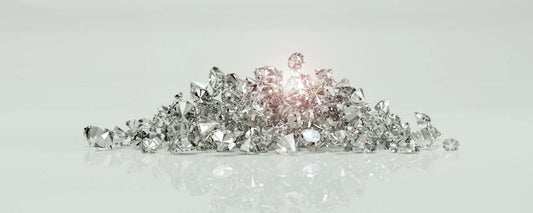What Is a Carat?
Carat, abbreviated as "ct", is the universal unit of weight for gemstones around the world. Carat is often misunderstood as the apparent size of a gemstone, but it actually refers to the gemstone's weight. Carat is a noun derived from "carob" (kerátion in Greek). Gem traders used the same weight of carob seeds as balance weights in the old days, so carat became a unit for gem weight.
1 carat is equal to 200 milligrams, or 0.2 grams. 1 carat can also be divided into 100 points, so 0.50 carat is also called 50 pointers. Accuracy of diamond weights is extremely important because even a fraction of a carat difference can vary considerably in diamond cost. Therefore, diamond weights are often measured to three decimal places (i.e. thousandths of a carat) and rounded up to one hundredth of a carat (e.g. 1.01cts).
Carat and Price
The carat of a diamond is not simply proportional to its price. For example, a 1.00ct diamond will be more expensive than two 0.50ct diamonds of the same quality combined. Since large-carat and high-quality diamonds are relatively rare, the price of diamonds of the same grade of color, clarity, and cut will also increase exponentially with the increase of carat. The price of diamonds (especially natural diamonds) generally jumps by a certain weight (e.g. 0.30ct, 0.50ct, 0.70ct, 1.00ct, 1.50cts, 2.00cts…), but the price of lab grown diamonds does not increase that significantly with the increase of carat weight when compared to that of natural diamonds.
Carat and Size
The carat of a diamond is directly related to its diameter. If a diamond is well cut, the larger the carat, the larger the diameter.
Diamond size is usually estimated by observing directly from above, as this is what the diamond will look like after it is mounted.
The following tool can be used to compare the diameter differences of different carats of round brilliant diamonds. (For reference only, diamond image may vary depending on screen size.)

Average size of round diamonds by carat
It should be noted that in the case of the same diamond carat, the actual diameter may have some deviations from the average value stated in the above chart due to different cut ratios. For example, a 1 carat diamond with a thicker cut will have a smaller diameter than the average of 6.4mm when viewed head-on. Therefore, in order to avoid buying a diamond with a visual effect that is smaller than the actual weight, we recommend that in addition to focusing on carat, never ignore the importance of cut.





